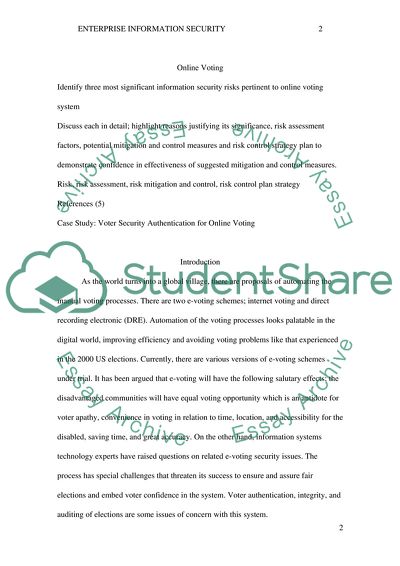Cite this document
(Voter Security Authentication for Online Voting Essay Example | Topics and Well Written Essays - 1750 words, n.d.)
Voter Security Authentication for Online Voting Essay Example | Topics and Well Written Essays - 1750 words. https://studentshare.org/information-technology/1817782-enterprise-information-security
Voter Security Authentication for Online Voting Essay Example | Topics and Well Written Essays - 1750 words. https://studentshare.org/information-technology/1817782-enterprise-information-security
(Voter Security Authentication for Online Voting Essay Example | Topics and Well Written Essays - 1750 Words)
Voter Security Authentication for Online Voting Essay Example | Topics and Well Written Essays - 1750 Words. https://studentshare.org/information-technology/1817782-enterprise-information-security.
Voter Security Authentication for Online Voting Essay Example | Topics and Well Written Essays - 1750 Words. https://studentshare.org/information-technology/1817782-enterprise-information-security.
“Voter Security Authentication for Online Voting Essay Example | Topics and Well Written Essays - 1750 Words”. https://studentshare.org/information-technology/1817782-enterprise-information-security.


